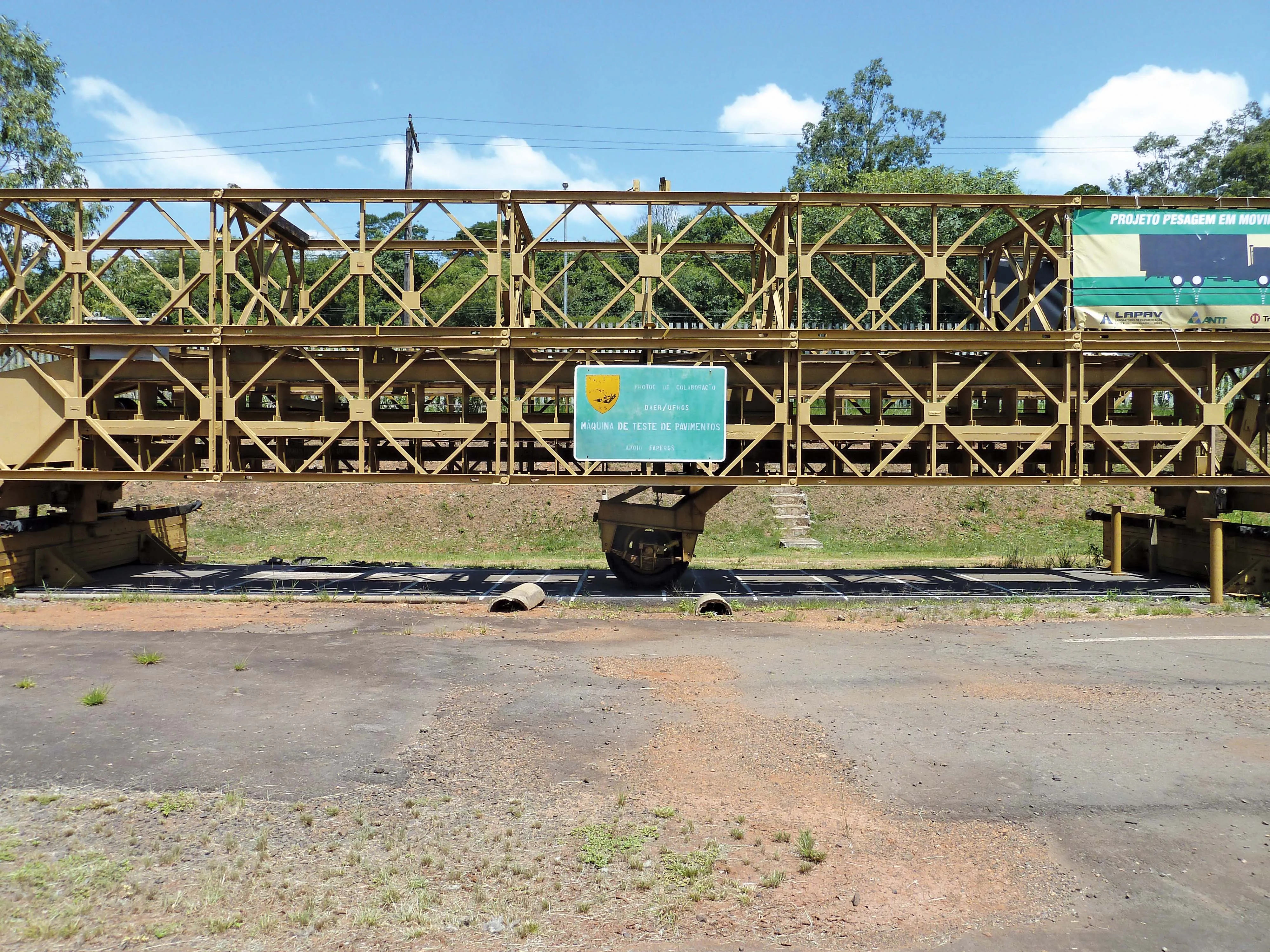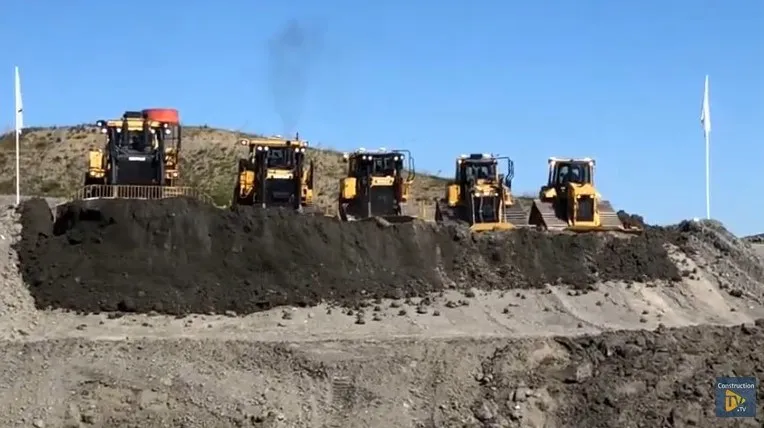One Eastern European WIM manufacturer is finding commercial success in Russia, while another leading manufacturer is in demand in South America, as Guy Woodford reports
Since Czech WIM technology manufacturer Camea secured type approval for its UnicamWIM system in early 2013, the firm has been installing a number of the systems in different Russian regions. These have included two UnicamWIM stations in Novosibirsk, one in the Kostroma region, and another on the M20 Highway between Belarus and Russia.
April 4, 2014
Read time: 7 mins

One Eastern European WIM manufacturer is finding commercial success in Russia, while another leading manufacturer is in demand in South America, as Guy Woodford reports
Since Czech WIM technology manufacturer6832 Camea secured type approval for its UnicamWIM system in early 2013, the firm has been installing a number of the systems in different Russian regions. These have included two UnicamWIM stations in Novosibirsk, one in the Kostroma region, and another on the M20 Highway between Belarus and Russia.
Other UnicamWIM systems were delivered to Russia, Denmark and Poland towards the end of 2013 but customers are waiting for better weather to ensure their successful installation.
“WIM projects are an important part of our ITS production and we are very interested in developing new WIM applications or improving existing ones,” said a Camea spokesperson. “In 2013 we completed a WIM project for a coal mining company in Indonesia. This project is based on four rows of2458 Kistler Lineas sensors and two inductive loops. The system shows approximately 3% accuracy for the gross weight and 8% for the axle weight. It is used not only for road protection but also for the internal company purposes, and the weight check of the excavated materials.”
UnicamWIM is described by Camea as a complete turnkey solution for high-speed WIM applications such as high quality traffic counting and classification to advanced enforcement systems. The WIM system measures and records axle and gross vehicle weights when vehicles pass over a measurement site point at regular traffic speeds, allowing thorough vehicle weighing without disrupting traffic flow. Features of UnicamWIM include licence plate recognition (UnicamLPR), ADR label reading (UnicamADR), and Advanced Night Vision. Optional system extras include Wanted/Stolen Car Search (UnicamSCAN), Travel/Journey Time Measurement (UnicamTRAVELTIME), and Traffic Data Collection & Surveys provision.
Camea has also supplied more than 30 Unicam ATC (advanced traffic counters and classifiers) to customers in Brazil. The firm’s spokesperson added, “We used our experience with WIM and we developed the counter which uses a weighing sensor in addition to conventional inductive loops. This device can count the axles which is very important for vehicle classification based on the number of axles.”
As well as being used for vehicle classification, Camea says UnicamATC is ideal for vehicle counting, vehicle occupancy counting, speed measurement, and congestion detection. It is said to offer high accuracy and reliability, simple installation, and low cost and easy maintenance. Certified as a speed measurement device, UnicamATC can be used for speed enforcement, in combination with smart cameras for documentation. Remotely configurable via Ethernet with a comfortable user interface, the UnicamATC is said by Camea to be quick and easy to setup at its deployed site.
For 16 years6831 TDC Systems has been inventing, creating and delivering Intelligent Transport Systems (ITS) across the world. This has included building a strong foothold in the South American region with the supply of Weigh-in-Motion equipment to countries such as Brazil, Chile and Mexico. Now that foothold is even stronger with recent new TDC contract wins for 2015 to supply over 200 HI-TRAC EMU3s in Brazil, Paraguay and Mexico.
“This is a very exciting time for TDC,” says TDC Systems’ MD and founder Mark Phillips, who adds, “We regard South America as one of the major growth regions in Weigh-in-Motion and have set up a manufacturing hub in Sao Paulo with our local partner Tracevia Do Brasil to provide our customers in the region with specialist technical support and resources. Our presence in South America is already strong with a large number of TDC’s WIM systems installed across the region. Being able to manufacture our equipment in the region and provide customers with local technical support makes us even more efficient. We are also delighted to introduce new product innovations into the region for 2014 with our recent contract wins for the supply of over 200 HI-TRAC EMU3s.”
The EMU3 is said by TDC Systems to be both a highly accurate WIM and real-time Vehicle Classification system. It uses low cost renewable energy supplies which makes the location of roadside installation flexible rather than being dictated by a power supply connection. Its integrated communications module with GPS and innovative sensor interface card are said to enable accurate vehicle WIM and classification data to be sent in real time, every five minutes from the roadside to the command centre. In practice, the system is able to operate wherever a mobile phone service is available and can record motorcycles at the same time as weighing a heavy goods vehicle.
The TDC Systems R&D team has also been working on a project in Brazil with the Universidade Federal Do Rio Grande Do Sul, a university based in Porto Alegre, eastern Brazil. The project involves an investigation into road damage caused by heavy axles on the toll roads. Using specialist equipment at the university to simulate heavy axle passage over the road, TDC’s EMU system is being used to measure the number of heavy axles and loading to calculate road damage.
Meanwhile, Andy Lees, TDC’s business development manager and chair of the International Society of Weigh-in-Motion (ISWIM) Vendors College, attended the January 2014 Transport Research Board Annual Conference and ISWIM Board Meeting in Washington where the US have a national standard for weighing equipment which will also cover WIM equipment going forward. It is anticipated that the standards will be adopted at the next Annual Conference on Weights and Measures in July 2015. The next ISWIM conference will be in Brazil in 2016.
US-based1315 Intercomp’s new LS630-WIM is NTEP Class IIII Certified for Direct Enforcement in static mode and functions as a portable WIM station for enforcement screening in dynamic mode. Portability and ease of set-up is said to be enhanced with the firm’s RFX Wireless Weighing Technology which transfers weight information to Intercomp’s PT20 CPU without the use of cables.
Featuring an 18.14tonnes per axle weighing capacity, the LS630-WIM allows users to weigh heavy commercial vehicles. The system will weigh axle-by-axle in static mode with ±0.5% accuracy or dynamically weigh vehicles as they pass over the scales at speeds up to 6km/hr, with 2-3% accuracy. Only two scales are required with the use of roll-up ramps/levellers to keep axle groups on a level plane. This enhances portability, yet reduces the overall investment as opposed to buying multiple portable scales to perform a roadside weighing.
Intercomp says its Portable WIM systems can be setup for weighing enforcement operations virtually anywhere, including unimproved surfaces. The LS630-WIM system includes two LS630 RFX Wireless scale pads with a weighing area of 38.1cm x 76.2cm to accommodate dual wheels, roll-up ramps/levellers and standard wireless communication, all of which can be transported in a vehicle and set up by one person in under 15 minutes. The LS630-WIM is also available with a capacity of 27.21tonnes per axle, and optional IntercompWIM software connects to a PC via RFX Wireless communication.
The LS630-WIM system, says Intercomp, provides authorities with a fast, reliable and cost-effective solution to protect roadways and concentrate enforcement almost anywhere required. The use of high speed ‘Virtual WIM’ (V-WIM) installed in the main line can serve as a screening device for potentially overloaded trucks, allowing portable systems to be used for enforcement efforts positioned downstream of V-WIM installations. This combination allows authorities a cost-effective solution to monitor, screen or issue citations in areas not served by permanent weigh stations.
Intercomp has also launched its completely redesigned website. The site has been updated to improve visitors’ experience by providing user-optimised navigation, intuitive information architecture, and refreshed imagery.
Other features include prominent key product write-ups, easy-to-access online brochures, and the ability to request information on multiple products simultaneously.
Since Czech WIM technology manufacturer
Other UnicamWIM systems were delivered to Russia, Denmark and Poland towards the end of 2013 but customers are waiting for better weather to ensure their successful installation.
“WIM projects are an important part of our ITS production and we are very interested in developing new WIM applications or improving existing ones,” said a Camea spokesperson. “In 2013 we completed a WIM project for a coal mining company in Indonesia. This project is based on four rows of
UnicamWIM is described by Camea as a complete turnkey solution for high-speed WIM applications such as high quality traffic counting and classification to advanced enforcement systems. The WIM system measures and records axle and gross vehicle weights when vehicles pass over a measurement site point at regular traffic speeds, allowing thorough vehicle weighing without disrupting traffic flow. Features of UnicamWIM include licence plate recognition (UnicamLPR), ADR label reading (UnicamADR), and Advanced Night Vision. Optional system extras include Wanted/Stolen Car Search (UnicamSCAN), Travel/Journey Time Measurement (UnicamTRAVELTIME), and Traffic Data Collection & Surveys provision.
Camea has also supplied more than 30 Unicam ATC (advanced traffic counters and classifiers) to customers in Brazil. The firm’s spokesperson added, “We used our experience with WIM and we developed the counter which uses a weighing sensor in addition to conventional inductive loops. This device can count the axles which is very important for vehicle classification based on the number of axles.”
As well as being used for vehicle classification, Camea says UnicamATC is ideal for vehicle counting, vehicle occupancy counting, speed measurement, and congestion detection. It is said to offer high accuracy and reliability, simple installation, and low cost and easy maintenance. Certified as a speed measurement device, UnicamATC can be used for speed enforcement, in combination with smart cameras for documentation. Remotely configurable via Ethernet with a comfortable user interface, the UnicamATC is said by Camea to be quick and easy to setup at its deployed site.
For 16 years
“This is a very exciting time for TDC,” says TDC Systems’ MD and founder Mark Phillips, who adds, “We regard South America as one of the major growth regions in Weigh-in-Motion and have set up a manufacturing hub in Sao Paulo with our local partner Tracevia Do Brasil to provide our customers in the region with specialist technical support and resources. Our presence in South America is already strong with a large number of TDC’s WIM systems installed across the region. Being able to manufacture our equipment in the region and provide customers with local technical support makes us even more efficient. We are also delighted to introduce new product innovations into the region for 2014 with our recent contract wins for the supply of over 200 HI-TRAC EMU3s.”
The EMU3 is said by TDC Systems to be both a highly accurate WIM and real-time Vehicle Classification system. It uses low cost renewable energy supplies which makes the location of roadside installation flexible rather than being dictated by a power supply connection. Its integrated communications module with GPS and innovative sensor interface card are said to enable accurate vehicle WIM and classification data to be sent in real time, every five minutes from the roadside to the command centre. In practice, the system is able to operate wherever a mobile phone service is available and can record motorcycles at the same time as weighing a heavy goods vehicle.
The TDC Systems R&D team has also been working on a project in Brazil with the Universidade Federal Do Rio Grande Do Sul, a university based in Porto Alegre, eastern Brazil. The project involves an investigation into road damage caused by heavy axles on the toll roads. Using specialist equipment at the university to simulate heavy axle passage over the road, TDC’s EMU system is being used to measure the number of heavy axles and loading to calculate road damage.
Meanwhile, Andy Lees, TDC’s business development manager and chair of the International Society of Weigh-in-Motion (ISWIM) Vendors College, attended the January 2014 Transport Research Board Annual Conference and ISWIM Board Meeting in Washington where the US have a national standard for weighing equipment which will also cover WIM equipment going forward. It is anticipated that the standards will be adopted at the next Annual Conference on Weights and Measures in July 2015. The next ISWIM conference will be in Brazil in 2016.
US-based
Featuring an 18.14tonnes per axle weighing capacity, the LS630-WIM allows users to weigh heavy commercial vehicles. The system will weigh axle-by-axle in static mode with ±0.5% accuracy or dynamically weigh vehicles as they pass over the scales at speeds up to 6km/hr, with 2-3% accuracy. Only two scales are required with the use of roll-up ramps/levellers to keep axle groups on a level plane. This enhances portability, yet reduces the overall investment as opposed to buying multiple portable scales to perform a roadside weighing.
Intercomp says its Portable WIM systems can be setup for weighing enforcement operations virtually anywhere, including unimproved surfaces. The LS630-WIM system includes two LS630 RFX Wireless scale pads with a weighing area of 38.1cm x 76.2cm to accommodate dual wheels, roll-up ramps/levellers and standard wireless communication, all of which can be transported in a vehicle and set up by one person in under 15 minutes. The LS630-WIM is also available with a capacity of 27.21tonnes per axle, and optional IntercompWIM software connects to a PC via RFX Wireless communication.
The LS630-WIM system, says Intercomp, provides authorities with a fast, reliable and cost-effective solution to protect roadways and concentrate enforcement almost anywhere required. The use of high speed ‘Virtual WIM’ (V-WIM) installed in the main line can serve as a screening device for potentially overloaded trucks, allowing portable systems to be used for enforcement efforts positioned downstream of V-WIM installations. This combination allows authorities a cost-effective solution to monitor, screen or issue citations in areas not served by permanent weigh stations.
Intercomp has also launched its completely redesigned website. The site has been updated to improve visitors’ experience by providing user-optimised navigation, intuitive information architecture, and refreshed imagery.
Other features include prominent key product write-ups, easy-to-access online brochures, and the ability to request information on multiple products simultaneously.








